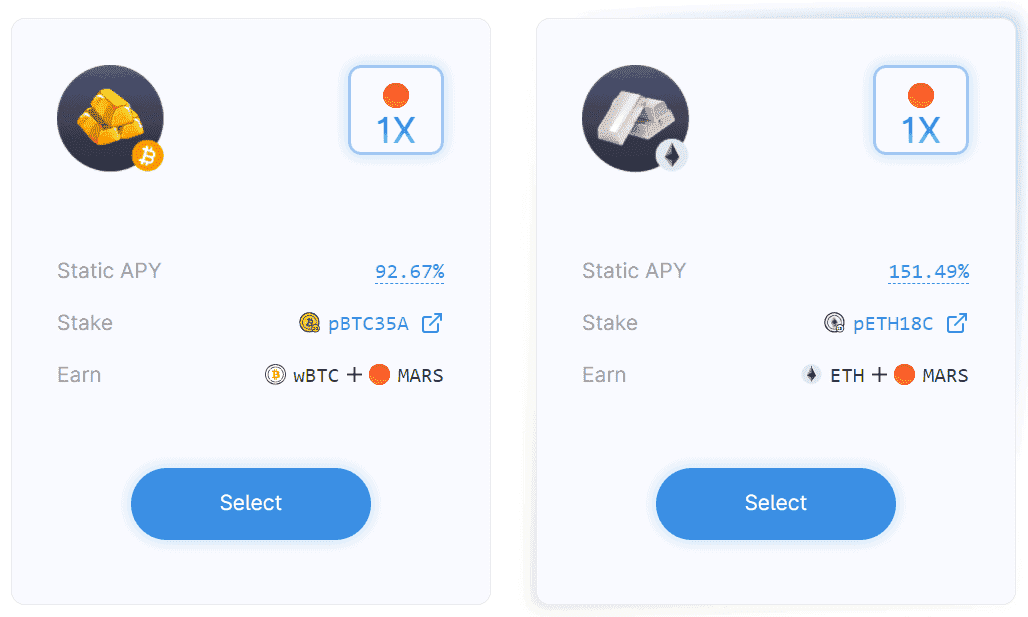Mining cryptocurrencies like Bitcoin or Ethereum is an extremely lucrative business, but not everyone can afford the extremely expensive mining hardware. Poolin, one of the largest mining pools in the world, wants to change that and has launched the Mars Project (MARS) for this purpose.
Mining cryptocurrencies like Bitcoin (BTC) and Ethereum (ETH) has grown from something that could be easily done with a conventional computer to a gigantic industry. For this reason, it is now very expensive if you want to mine Bitcoin profitably.
So-called ASIC miners (Application Specific Integrated Circuit), which are specially manufactured for mining cryptocurrencies, now have the same mining power as 700 conventional computers and can cost between 2,850 and 8,500 US dollars costs.
In addition, the enormous development of the Bitocin hashrate is further evidence of the professionalization of the mining industry. For some time now, it has comprised over 160 million terahashes per second, which corresponds to almost 10 to the power of 19 hash calculations per second.
It is therefore obvious that anyone who is serious about mining Bitcoin and Co. relies on specialized mining hardware.
Even so, even the best mining hardware is no guarantee that an individual miner will generate constant income. That’s because the chance of actually mining a block is pretty slim when trying to mine cryptocurrencies like Bitcoin on your own.
Therefore, nowadays many miners join together in so-called mining pools. Together they come to a larger proportion of the total hashrate, which means that the entire pool of regular blocks mines. As a result, the income for all participants in the mining pool is more continuous and predictable than if they mine alone.
In order to enable the general public to benefit from mining again, the world’s second largest Bitcoin mining pool has Poolin launched the Mars Project (MARS).
What is the Mars Project?
Mars Project is the only decentralized protocol based on Ethereum that tokenizes hashpower (Bitcoin mining service) and makes it tradable as so-called hashrate tokens – but what exactly are hashrate tokens?
Hashrate tokens are ERC-20 tokens that are secured by standardized hash power. Holders of hashrate tokens thus receive part of the underlying hash power of the mining pools from Poolin. By staking the token, holders can immediately start mining cryptocurrencies after purchasing a hashrate token. In addition, the mining rewards they earn can be paid out in real time. The Mars Project enables owners of hashrate tokens to benefit from crypto mining without having to buy expensive mining hardware.



The Mars ecosystem currently consists of three different hashrate tokens that can be staked to mine cryptocurrencies. With the two hashrate tokens pBTC35A (PBTC35A) and pETH18C (PETH18C) Holders can mine Bitcoin or Ethereum. In addition, they receive an additional reward in the form of the MARS governance token for staking the two tokens.



Currently, the staking of pBTC35A allows an expected return of up to 92 percent per year, while staking pETH18C can even go up to 151 percent in the year can come.
What role does the MARS token play in the hashrate token ecosystem?
In addition to the two Ethereum and Bitcoin hashrate tokens, the Mars Project owns the MARS governance token. This is distributed as an additional reward for providing liquidity on decentralized exchanges and staking pBTC35A and pETH18C. In addition, the MARS token can also be staked, which allows the holder to earn an additional Bitcoin return. Because all income from the hashrate tokens not pegged in the MARS ecosystem flows back to the holders of MARS tokens.
In addition, MARS owners automatically have the right to make governance decisions to participate. This means that they have the opportunity to make suggestions that are important for the further development of the protocol and the Mars Project Community. For example, in the future they could influence how high the profit allocations for the various hashrate tokens should be. It is also conceivable that the MARS community suggestswhich cryptocurrencies to add to the Mars Project ecosystem next.
Conclusion:
Hashrate tokens are a brand new phenomenon in the crypto space. They make it possible for the first time to benefit from the mining of various cryptocurrencies even with little start-up capital.
Lately, crypto mining has come under increasing criticism due to its extremely high power consumption. For example, Elon Musk recently suspended Bitcoin payments due to environmental concerns. Hashrate tokens could help make Bitcoin mining greener. It is conceivable that miners could specifically sell hashrates in the form of tokens that are based on renewable energies. In this way, the Bitcoin community could work together to make Bitcoin mining more environmentally friendly.
In addition, hashrate tokens show us that it is already possible today to tokenize assets from the real world. On the other hand, of course, this also entails certain risks. It is possible for mining hardware to fail or even be completely destroyed by natural disasters such as floods and earthquakes. In addition, governments could restrict or even ban trading in environmentally friendly hashrate tokens. Although mining pools like Poolin diversify their mining locations around the world, such external risks can never be completely ruled out.
